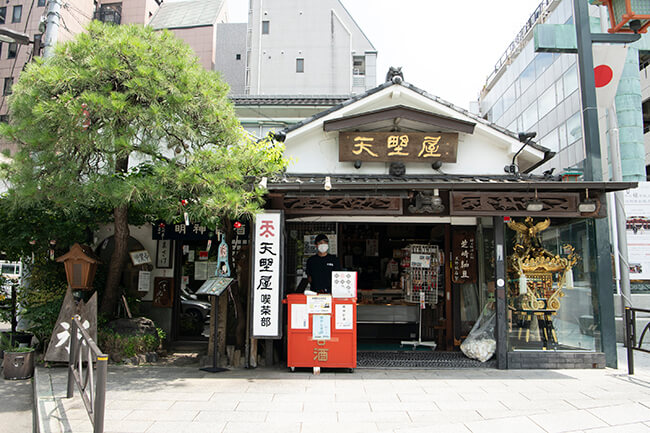Amazake Shaved Ice at Amanoya, a Historic Sweets Shop
Aug 22,2024
Amazake Shaved Ice at Amanoya, a Historic Sweets Shop
Aug 22,2024
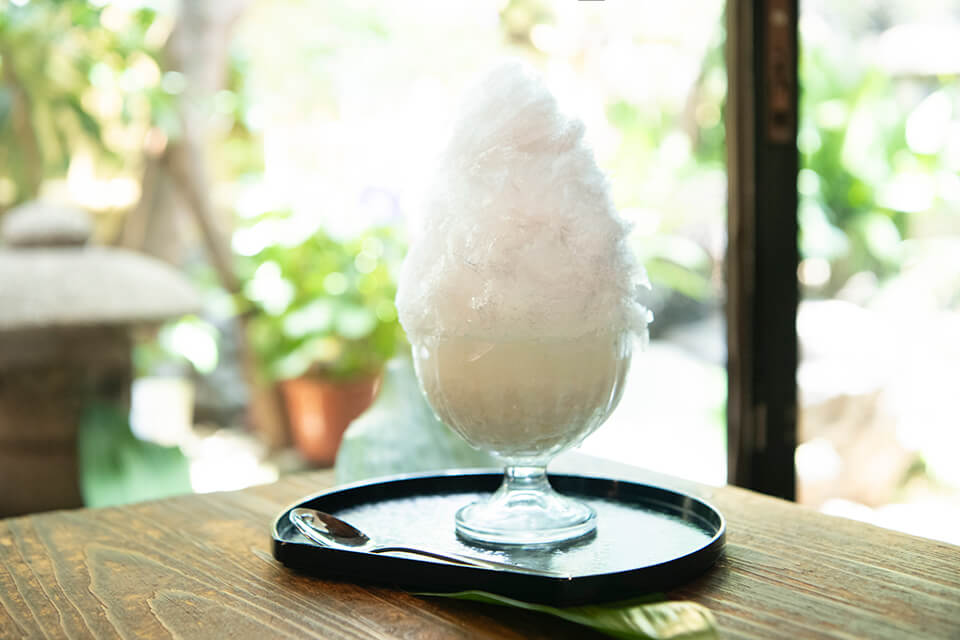

Amanoya is perched beside the main gateway of Tokyo’s Kanda Shrine. The shop, which was established in the Edo period (1603 to 1868), is famous for its koji (rice malt) and amazake (a sweet drink made from fermented koji), both of which are produced with traditional methods. In the summer months, customers of all ages line up at the shop from opening time onwards, seeking its shaved ice that comes with plenty of amazake. We spoke with the proprietress, Amano Fumiko, who continues to preserve, with this one shop, flavors that have not changed since its founding.
Amanoya is located beside the gateway to Kanda Shrine, which is commonly called Kanda Myojin. Opened in 1846 near the end of the Edo period, the venerable amazake shop has a long history.
Welcoming us was the shop’s proprietress, Amano Fumiko. “Our amazake is made from rice and koji. Which is why it has a natural sweetness.” At the back of the shop, in a muro (koji-making room) six meters underground, the seventh-generation owner and other artisans continue to make koji in the traditional way.
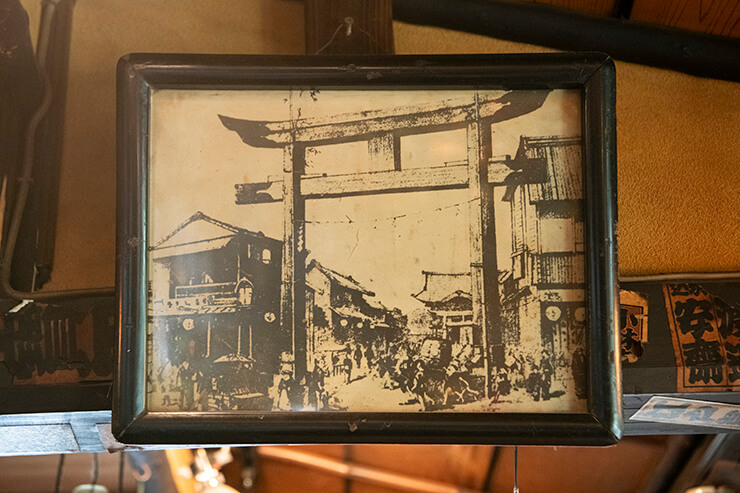
A photo of the former Amanoya building and the torii gate to Kanda Shrine. The current building was reconstructed after WWII.
“Our very first owner was a nobleman originally from Miyazu, Kyoto. When his younger brother, who was a dojo instructor in the town of Edo, was assassinated, he came to Edo to avenge his brother’s death. He believed that if he stayed in this location on the Nakasendo (the main road between Edo and Kyoto at the time), where many people passed by, he would find the assassin, although he never did. He couldn’t return to Kyoto, so he used an old cellar to make koji and began selling amazake.”
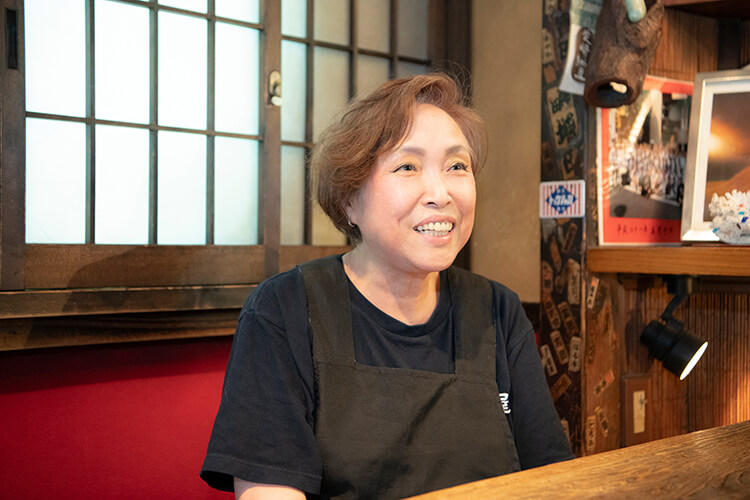
Amano Fumiko, who has worked in the shop for 60 years, is full of vitality because she drinks amazake every day
In the Edo period, the Yushima district boasted over a hundred koji producers that had built muro and made koji. Today, only Amanoya has kept its muro and continues to make koji in the traditional way.
“Because it is underground, the muro’s temperature and humidity are naturally controlled, making it cool in summers and warm in winters. We make koji using the same methods as in the old days. Having said that, there are no recipes; our artisans adjust the process based on intuition and feel. The koji bacteria are very sensitive and we have to watch over them every day. We treat them like you would raise a baby.”
After cultivating the koji for five days, rice with the consistency of rice porridge is mixed in with the koji and left for about 10 hours at a temperature of 60°C. The mixture is then moved to a cool location and left to ferment for about a week, after which the amazake is ready. It’s smooth mouthfeel and refreshing sweetness are why it is so popular.
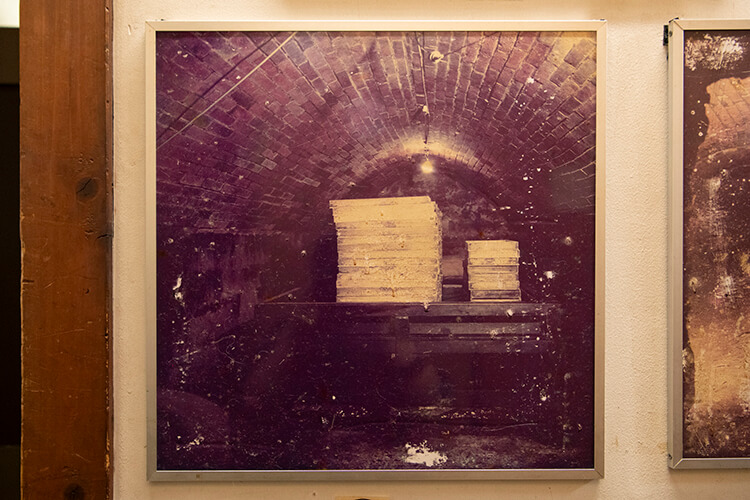
The muro underneath the shop. Tokyo’s Chiyoda Ward has recognized it as a Designated Tangible Cultural Property.
The tea shop section is stuffed with models and novelties created by previous owners, giving it a retro vibe where time seems to pass slowly. It’s a cozy place for all kinds of customers to chill, ranging from regulars who have been coming for three generations to women who drop in after visiting Kanda Shrine and tourists from overseas.
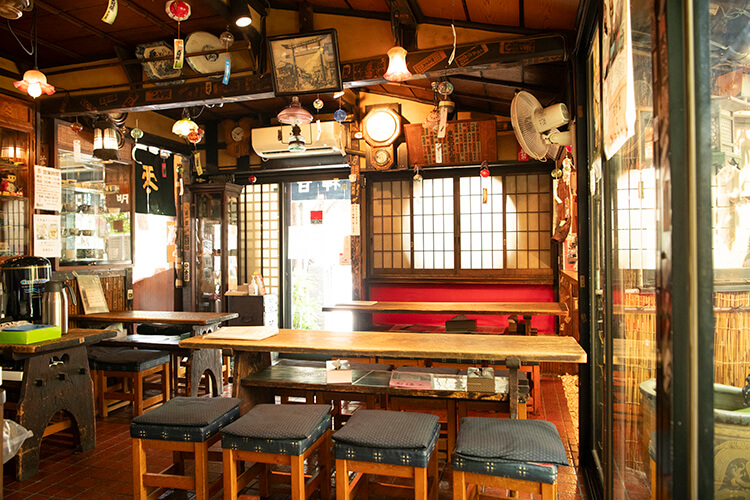
The interior has a unique, tasteful ambience. In summer, cool-looking wind chimes ring out.
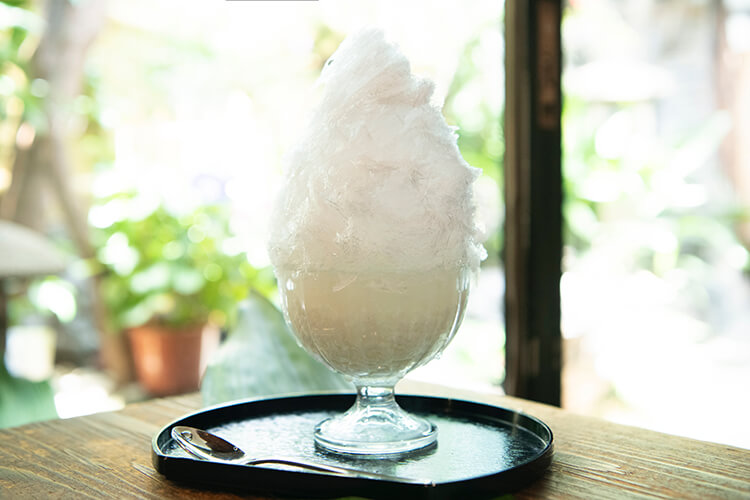
The amazake shaved ice is sold from the end of April through to around October 10. The dates vary slightly year to year, so be sure to not miss out.
Topping the summer specialties on the tea shop’s menu is the amazake shaved ice. Only Amanoya makes shaved ice like this — fluffy ice shavings under which lies plenty of amazake. After breaking up the crunchy ice, mixing it with the amazake, and taking a mouthful, the cold ice and the sweetness and aroma of the rice koji combine together to make a most rewarding treat. It seeps gently into your body, making you forget about the summer’s heat.
Amazake is, naturally, another popular choice. Rich in nutrients, amazake is perfect for warding off summer heat fatigue. Both hot and cold options are available, and both have their steadfast fans. A popular combo that people can’t stop eating is amazake served with stewed oden ingredients topped with homemade dengaku miso paste.
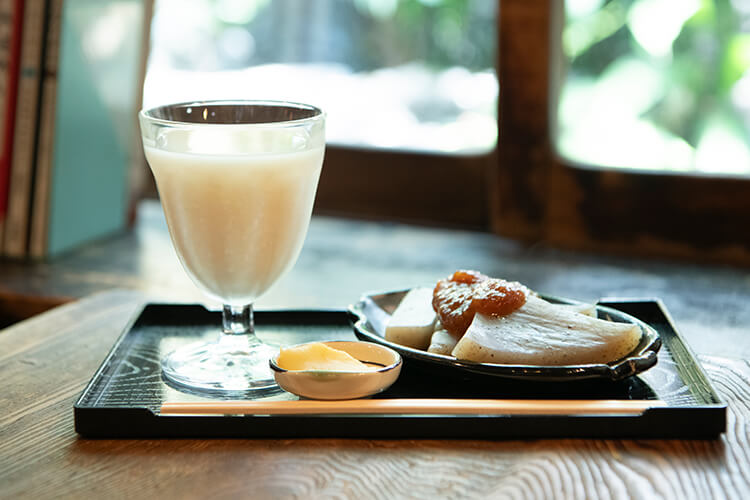
The chilled amazake and mini miso oden combo. Takuwan or other pickles are served with the amazake as palate cleansers.
The sales counter next to the tea shop sells various products as souvenirs. Many people have been purchasing fresh koji due to the recent popularity in natural foods.
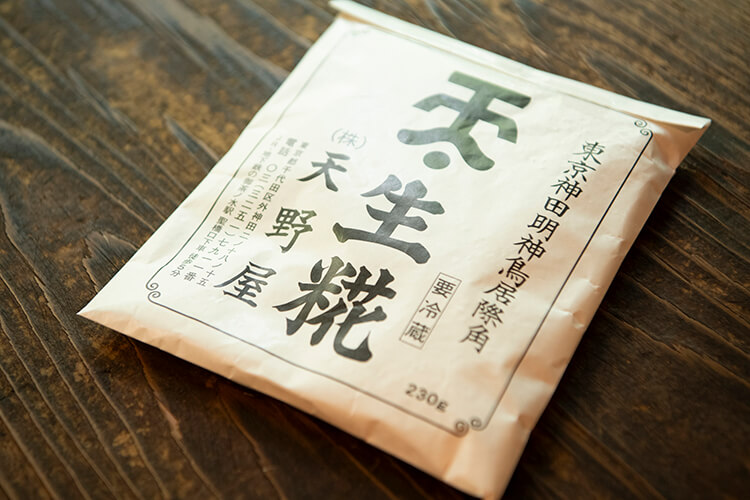
Fresh koji bacteria are powerful fermenters. Many regulars claim that Amanoya’s fresh koji is essential for making miso.
“With koji, you can make miso, amazake, salted koji, soy sauce koji, and many other things. If you don’t know how to make something, we can provide recipes,” says Amano. She recommends their pre-packaged amazake for people who want an easier way to enjoy amazake.
“The ratio is one part amazake powder to two parts water. When the water comes to a boil, add the amazake powder and mix. Adding a dash of salt will bring out the sweetness and make it taste even better. For those who want to drink amazake right away, we recommend our straight amazake. It took us ten years to develop this product because we didn’t want to use any additives. You can also freeze the straight amazake and make it into sherbet. It tastes especially delicious after a bath.”

Amanoya’s products are branded Myojin Amazake after the Kanda Myojin Shrine. From left, fresh amazake, pasteurized amazake, and straight amazake.
Amazake can be used as a seasoning as well as a drink.
“In the old days, people used amazake as a substitute for sugar. It makes omelets soft and flavorful, and we also recommend adding it as a secret ingredient to meat and potato stews, simmered dishes, and curries.”
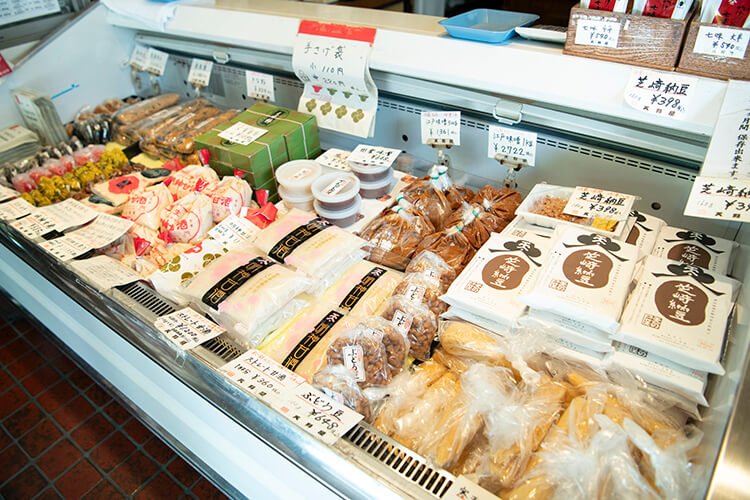
The shop sells takuwan and other pickles as well as homemade fermented foods such as Edo miso and Shibasaki natto [fermented soybeans]
Amanoya is family-run business and has maintained its underground muro since the Edo period. Amano says she hopes to preserve the shop going forward just as it has been right up to the present day.
“To the extent possible, we want to keep the store as it is. If we were to mechanize the process or try to expand our business, the quality and taste would suffer. If the taste were ever to change, it would be very hard to replicate it again. We take every precaution with our products, because people eat what we sell.”
